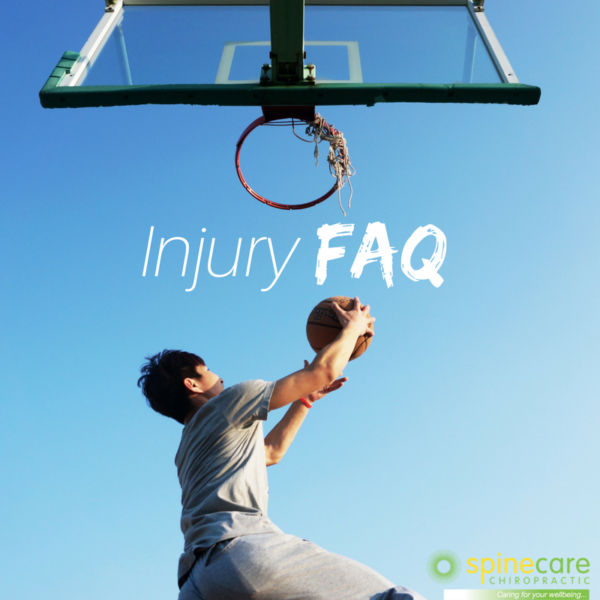Sporting injuries: Chiropractic FAQ

As temperatures drop in the Southern Hemisphere, people warm up with their favourite winter sports. But did you know that 36 000 Australians are hospitalised each year with sporting injuries? Ouch! To ensure you’re not among them, it’s a good idea to keep prevention and safety top of mind.
Today, we share how injuries happen, why they hurt so much, which sports are the most injury-prone and our advice for prevention.
What is a sporting injury?
There are many ways people hurt themselves while playing sport. Of course, it depends largely on the activity – extreme ironing brings different risks than camel racing.
Common complaints include pulled muscles, torn ACLs, shin splints, sprained ankles and tennis elbow. More extreme mishaps can involve concussion, broken bones or dislocation, landing the unlucky player in hospital.
Why does getting injured hurt so much?
It’s one of those questions to which the answer seems obvious, but when you stop to think about it… exactly why do injuries hurt?
Nociceptors.
There are over three million pain receptors in the body, called ‘nociceptors’. They detect undesirable stimulus, sending information through the nervous system to the brain and alerting us to injury. What we feel as ‘OUCH!’, is actually an in-built system of awareness and protection – which doesn’t make it any less excruciating.
At the site of the injury, the body takes swift action. Circulation is increased to move fluid and white blood cells to the area, and inflammatory chemicals are released to start the healing process. This results in classic injury signs like redness, heat and swelling – that each bring their own discomfort.
The hidden effects of injury
There are less obvious ways that injuries cause pain, too. The psychological effects of being sidelined from your favourite sport are nothing to be sneezed at. Studies have found that injured athletes may suffer ongoing distress, low self-esteem and depression following an injury.
Plus, it can negatively impact your social life – whether it’s an inability to dance on a Friday night or the simple loss of your soccer community.
And then there are the biological consequences. Many of us get a kick out of exercise, combining time outdoors with natural endorphins for a healthy high. Exercise regulates everything from weight to blood sugar levels to anxiety – but getting hurt can abruptly halt these benefits.
How do injuries affect everyday life?
Over two million Australians took time off work in the last five years due to athletic injury, with almost 500 000 of them forced into unpaid leave.
As well as that, being injured may affect your family, the happiness of your dog (no walks!) and even holiday plans – making it costly on many levels.
Which sports cause the most injuries?
We’re a nation of sporting fanatics, and when we’re not barracking behind the fence, we’re on the field.
In Australia, the leading injury-causing sports are Australian Rules football, soccer and cycling. Did you pick them?
Heal injuries before they happen
As our practice members know, we’re all about prevention. Rather than reacting to a negative state of health, we’d prefer to take a little extra care to prevent it in the first place.
Good health is a great place to start, giving your body the best chance of weathering knocks with strong bones, ligaments and tissues.
Next, it’s about warming up. Warming up can seem tedious when you just want to get out on the field, but it’s a truly essential pre-exercise ritual.
Right now as you read this, blood flow to your skeletal muscles is low – around 20%. But after 10 – 20 minutes of movement – from gentle to more intense – it’ll reach up to 75%. More blood means more oxygen and nutrients to the muscles, allowing them to perform better, stay loose and warm, and take pressure off your joints.
Cold muscles are more likely to tear, plus, studies have shown that immediate intense exercise can also stress the heart – it’s a muscle, after all.
As chiropractors, we’d be remiss to ignore alignment. Many injuries feel like a sudden, freak occurrence, when in reality, the body has been struggling with imbalance for years. A bump or blow can be the final straw.
We suggest coming in for a pre-season assessment and adjustment to see where your body’s at, preventing a problem before it shows up on the field.
Want more tips?
We wrote a post which you can read here with extra advice for preventing sporting injuries – consider it your homework!

